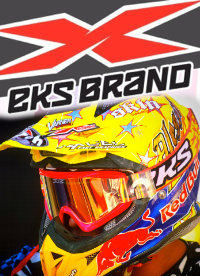Monster Energy Kawasaki confirms AMA riders for 2023
 Thursday, August 4, 2022 at 8:51PM
Thursday, August 4, 2022 at 8:51PM Monster Energy® Kawasaki and Monster Energy/Pro Circuit/Kawasaki are geared up for yet another full year of world-class racing in 2023. The Kawasaki racing teams will compete against the premier supercross and motocross talents from around the globe as they seek to contend for the 2023 Monster Energy AMA Supercross Championship, the AMA Pro Motocross Championship and the groundbreaking SuperMotocross World Championship.
Monster Energy Kawasaki will continue its two title favorites of Kawasaki Team Green™ graduate and 2020 Pro Motocross runner-up Adam Cianciarulo who will compete for his fourth year aboard the KX™450SR alongside 2022 AMA Supercross runner-up Jason Anderson following an exceptional 2022 season. In the 250 Class, Monster Energy/Pro Circuit/Kawasaki will also continue with its roster of proven race winners with Jo Shimoda, Austin Forkner, Cameron McAdoo, and Seth Hammaker in addition to nine-time AMA Amateur National Champion Jett Reynolds and upcoming Kawasaki Team Green rider Ryder DiFrancesco.
“We are confident with our team roster for 2023,” said Kawasaki Racing Senior Manager, Dan Fahie. “The success we shared with Jason in both supercross and motocross is promising as we look to the upcoming unified SuperMotocross World Championship. We’re also very optimistic about Adam’s return to the starting gate as he’s proven to be a top contender at the premier level. We are in a great place with the development of our KX450SR and look forward to continued success through this next evolution of professional motocross.”
Anderson and his KX450SR proved a winning pair through the 2022 Monster Energy Supercross Championship, earning seven Monster Energy Supercross Main Event wins and leading 135 Main Event laps; nearly twice as many laps led as his closest rival. Anderson carried his success into the Pro Motocross Championship where he claimed his first 450 Class overall win at Round 2 and asserted himself as a staple podium finisher. Looking to the Monster Energy Supercross Championship, Pro Motocross Championship and SuperMotocross World Championship in 2023, Anderson aims to continue his fight for premier class supremacy.
“My first year racing the KX450SR with the Monster Energy Kawasaki team has been awesome,” said Anderson. “I’ve won more races this season than any other in my career, so it’s clear the program and the team environment we have are working well. Next year there will be more up for grabs than ever before, so we are focused on making another strong push for the championship.”
Cianciarulo will line up with Monster Energy Kawasaki in 2023 to continue his illustrious 18-year partnership with Kawasaki as he enters his fourth year of 450 Class racing. The No.9 KX450SR rider graduated through the Monster Energy Kawasaki Team Green program on his way to the 2019 AMA Pro Motocross 250 Championship, was crowned 2019 Monster Energy Cup Champion, secured 2020 Pro Motocross runner-up honors and has a total of 21 combined professional wins. Cianciarulo is geared up to capitalize on a full off-season of preparation with the team ahead of his 2023 Championship efforts.
“I’m eager to get back to racing at the top level again this year,” said Cianciarulo. “With a thorough recovery period behind me, I’m in a great place physically and mentally to excel when we go racing. I’m really enthusiastic about what’s coming with the new developments to our sport and I’m doing everything I can, along with the whole Monster Energy Kawasaki team, to be the best when it comes time to drop the gate.”














